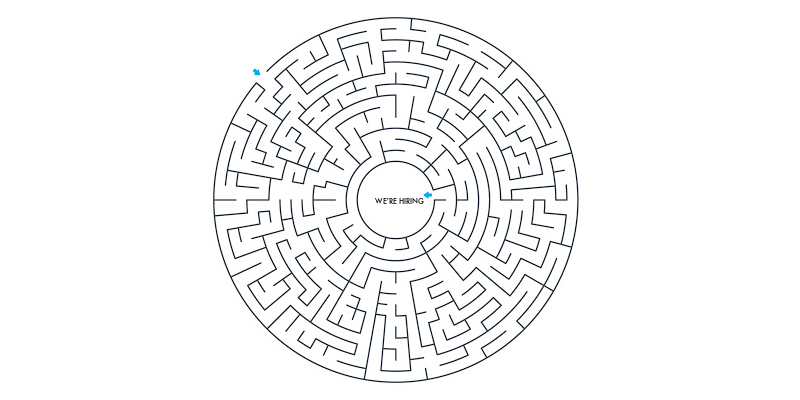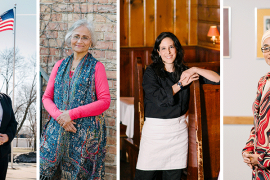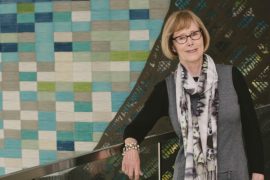By Shelby Rowe Moyer
Stairs at the entrance of an office building. A workplace policy that dictates professional hairstyles. How salaries are decided for each employee.
These obstacles — some seemingly benign and others glaringly obvious — are just a few examples of how employers should be cognizant of diversity, equity and inclusion and how societal norms might be impacting that progress.
When we talk about diversity, equity and inclusion (DEI), we’re talking about — for example — people with mental and/or physical disabilities, racial/ethnic groups and people with multicultural backgrounds, and people who identify as LGBTQ+ and women.
Society wasn’t really designed with these people in mind. Stairs are an illustrative example of this, says Annette Miller, CEO of EQT by Design. We’ve been socialized to see stairs as a way to get to a destination, as opposed to a roadblock, she says.
“It’s so subtle that you don’t even realize it’s wrong,” she says. “And that’s socialization. We’re immune to calling it out (as exclusionary) because of how we’ve been socialized.”
For the last 31⁄2 years, Miller and her team at EQT by Design in Madison have been helping government entities, nonprofits and corporations create organizational change by identifying how their workplace culture and processes are sabotaging their efforts to be inclusive.
Diversity is representation, Miller says, and inclusion is bringing those voices into the center of the conversation and decision-making process. Equity is where systemic change happens. But Miller says that just because someone has a seat at the table does not mean there’s equity.
“You could be at the table and still not have pay equity. You could be at the table and people don’t listen to your ideas, but then someone else has the same ideas and they’re [acknowledged]. You could have a seat at the table and somebody could say the way you dress or the way you do your hair or the way you speak or don’t speak could all be things that hold you back,” says Miller.
Pervasive, societal “norms” and biases bleed into the workplace and unconsciously — or consciously — lead us to decide who gets an opportunity and who doesn’t, she says. Or it could keep someone from even seeing or applying for a job in the first place.
Workplace diversity and inclusion is often discussed in terms of its impact on individual employees, but DEI efforts are good for a company’s bottom line as well, says Sonji Young, an inclusive excellence advisor in American Family Insurance’s Diversity Recruiting division, which has received longstanding honors for its workplace diversity and inclusivity achievements.
A 2018 study from the Boston Consulting Group analyzed 1,700 companies from eight countries and found that those with diverse management teams pulled in 19% more revenue.
“There have been some really dynamic studies that have demonstrated that diverse teams outperform teams who are not,” says Young. “Diverse teams bring a level of innovation that typically differentiates companies that are more diverse versus companies that are not. So therein lies the real value.”
So, how can organizations become more diverse, equitable and inclusive? We tapped Miller and several other local professionals to teach us some of the best hiring and recruitment methods, and how we can create an environment that encourages employees to stick around.
››› LET’S BEGIN WITH HIRING AND RECRUITING.
Young says American Family isn’t exclusively expecting people to seek them out. Instead, the company has created community partnerships, including with the local OutReach LGBTQ+ Community Center, to meet people where they are.
“We’re trying to get more folks from our LGBTQ+ community, so let’s connect and partner with them to not only understand the needs of the community but to share that there are a plethora of opportunities in American Family for them to consider,” Young says.
Dawn Crim — the secretary of the Wisconsin Department of Safety and Professional Services, who was successful at building a diverse leadership team to serve the state’s 72 counties — echoes Young’s advice.
Get out there and talk about what you do, Crim says. Exposure is huge. Step one could simply be expanding and diversifying your network, Crim says. Word of mouth factors into who applies for an opportunity.
But one of the most important factors is where a job is advertised, she says. You’ll reach a wider audience if you post a job listing in several diverse publications or host a table at association meetings.
When crafting the job description, take a closer look at the skills and requirements listed on the job description. Recently, Crim says one of her staffers noticed a job listing included a requirement that only current or former state workers would have, which inadvertently narrows the applicant pool.
The same can be said for education, Miller says. Are you requiring a Ph.D. because it’s essential for the performance of the job, or did you raise the bar because Madison is a college town?
“If you’re trying to be inclusive, ask yourself, ‘Is that the only qualifier?’” Miller says. “Or are there some different ways in which you can talk about the different skills and abilities a person could bring to the table.”
And that brings us to transferrable skills. Once you get to the interview pro- cess, broadening your questions — and the hiring team — will allow you to better gauge how a candidate’s past experience relates to the job you’re hiring for.
Crim says if you focus too sharply on the specific functions or responsibilities of a job, then fewer people might apply or seem qualified for the role.
››› NOW, HOW DO YOU KEEP THE PEOPLE YOU HIRED?
Miller says it’s all about building and cultivating a culture that’s inclusive and providing opportunities for employees to grow. An inclusive culture can be as mundane as the conversations people have around the office, she says. If one topic seems to dominate the conversation — or if you notice someone always seems left out — be intentional about changing gears and bringing them into the fold.
And again, when decisions and judgments are made about employees, ask yourself how you arrived at that decision. If you don’t think that person will be a strong leader or a personable sales associate, ask yourself why you think that and check for personal biases by confer- ring with other managers.
Yasir Kamal, the vice president of Inclusive Excellence at American Family, says they’ve been able to bolster an inclusive culture by building it into the structure of the organization.
American Family has nine Business Resource Groups, including LGBTQA, Multicultural, Southeast/East Asian and Veterans and Military. The resource groups weigh in on company decision-making processes, like evaluating the inclusive- ness of health care policies, marketing materials and conversations with customers. They’re also groups managers look to for development opportunities and promotions. The groups foster a sense of belonging, he says, and it allows people to show up to work as their authentic selves.
“Because we’re able to build on and unleash the capabilities of our employees, we’re able to create those life-changing solutions for our customers and communities,” he says. “That’s what diversity, equity and inclusion is really about.”
If you’re a small business, Young says, managers can help employees grow and develop simply by allowing and encouraging them to attend conferences and trainings and ensuring they’re being mentored and lifted up. Inclusive efforts have to start at the top.
››› DIVERSITY, EQUITY AND INCLUSION HAVE BEEN “TRENDING” TOPICS, BUT IT’S A PROVEN STRATEGY FOR A SUSTAINABLE AND SUCCESSFUL BUSINESS.
“Customers and employees alike want to do business with and work for compa- nies that support DEI, and they’re taking their business and talent elsewhere if they feel businesses do not align with their values,” Kamal says.
Crim agrees. If her team was homogenous, she says the staff would have to really “stretch themselves” in order to meet the needs of everyone in the state. Her department affects one in three people in Wisconsin, so it’s in her best interest to have a staff that represents the interests and backgrounds of people in all 72 counties.
For employers who are at the beginning stages of expanding their diversity, hiring that first person is probably the hardest part, Crim says. But, “like attracts like.” If you can recruit one, then you can recruit two and then three.
“A critical mass really helps with authenticity,” Crim says. “If you only have one and then you lose your one, it’s very challenging to reset and start over. And that’s also something people should be mindful of. It’s not a ‘one and done.’ The more people you have, the more you’re building a culture. You’re building connective tissue.”
It’s also important to understand that there is no beginning, middle and end when it comes to diversity, equity and inclusion, Miller says. “It’s a journey, not a destination.” This is an individual and collective journey. Everyone has to be part of the solution.
“I think Madison recognizes that, as a community and as a society, we have work to do and they’re starting to understand it,” Miller says. “They’re uncomfortable with it, but they understand it and it’s getting people ready to do active work. I think that’s a change.”
Want to learn more about how biased systems manifest in daily life? You may have heard of some of these already, but they’re great educational tools about systematic racism, implicit bias and ableism.
“13TH”
A documentary about how the 13th Amendment created a loophole that has ultimately restricted the rights and freedoms of Black Americans.
“How to be an Anti-Racist” by Ibram X. Kendi
A deep dive into racial inequality and its ripple effect on society — and even how Black people have been socialized to see themselves.
“So You Want to Talk About Race” by Ijeoma Oluo
Oluo offers a really informative primer on race and the harmful effects of implicit bias.
“What Can a Body Do?” by Sara Hendren
An exploratory look at the things that make up our world — furniture, homes, offices, streets — and how they could be creatively designed to assist bodies of all capabilities.
“Call Your Girlfriend – Demystifying Disability”
This podcast episode of Call Your Girlfriend gives the floor to two women with disabilities who share how they navigate the world and how able-bodied people can be better friends and allies.




